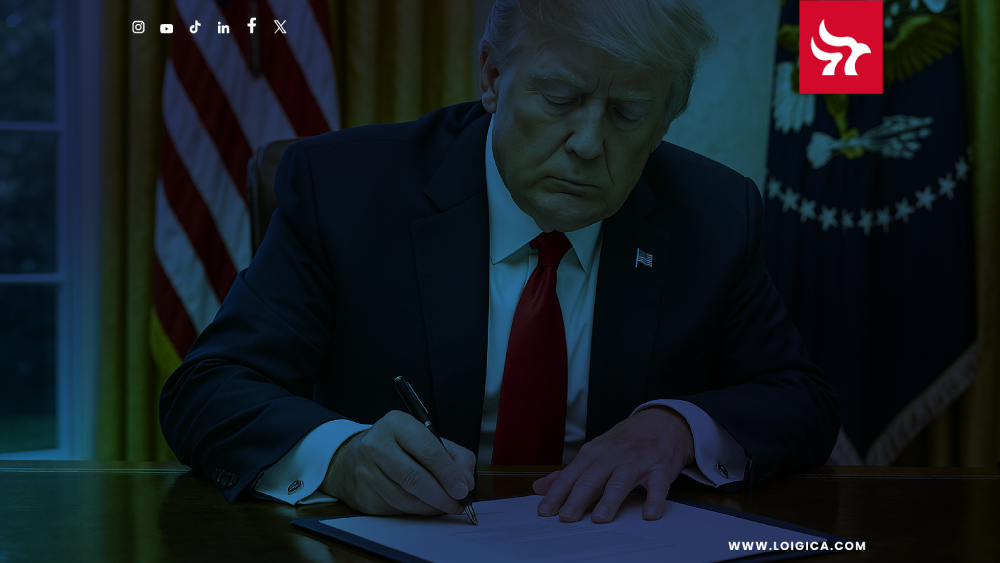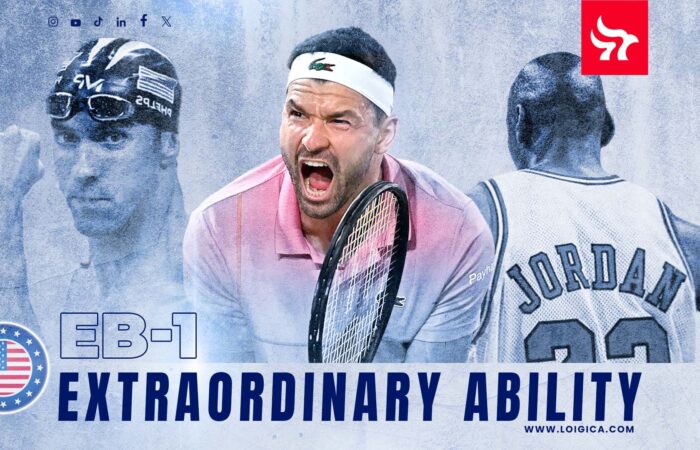Get the latest information
Suscribe to our newsletter and receive on your inbox every Monday everything you need to know on US Immigration
Not every gymnast wants to stay on the mat forever. Some want more—coaching, school, or a career in the US. Others want a green card so they can build a life after competition. But how do you go from standing on a podium to standing on US soil for good? For a few top-level gymnasts, the answer is the EB-1 visa.
This article is for athletes, coaches, and families who are looking for a legal path to permanent residence in the U.S. We’ll walk through the EB-1 visa in plain English—what it is, who qualifies, and what makes someone “extraordinary” in the eyes of U.S. immigration. We’ll also share examples of gymnasts who’ve made it, and a checklist to see where you stand.
If you think your talent is strong enough to carry you across borders, keep reading.
What’s the EB-1 Visa?
The EB-1 visa is a US employment-based immigrant visa that gives permanent residence—commonly called a green card—to people with extraordinary ability, outstanding professors or researchers, or multinational executives and managers. It’s part of the first preference category for employment-based immigration. That means it’s at the top of the list when it comes to how quickly green cards are given out under work-related categories.
This visa is immensely popular because it skips the labor certification process, which most other employment-based green card categories require. That step usually takes time and involves getting an American company to sponsor you, proving that no US worker is available for the job and getting a work permit with the Department of Labor. EB-1 cuts through all that.
If you think you might qualify—or maybe you’re a coach helping someone else understand this—it's worth digging into the details. The requirements are strict, but the benefits are clear: a faster path to a green card and permanent life in the US. We’ll touch on two in this article: the appropriate subcategory and what it means to be “extraordinary.”
The EB-1 and its subcategories
The EB-1 visa has three main categories, each designed for people who show extraordinary ability, or who are recognized for their high achievements in specific fields:
-
EB-1A: Individuals with Extraordinary Ability
This is for people who are at the very top of their field in the sciences, arts, education, business, or athletics. They must show proof of sustained national or international acclaim—like major awards, media coverage, published work, or a history of high-level achievements. You can apply on your own; no job offer or employer is needed. -
EB-1B: Outstanding Professors and Researchers
This category is for people who have international recognition for their work in teaching or research. You need at least three years of experience and a job offer from a U.S. university or research institution. -
EB-1C: Multinational Executives and Managers
This is for leaders in global companies. You must have worked abroad in a managerial or executive role for a related company and now be transferring to the U.S. branch.
A gymnast would most likely qualify under EB-1A. This category includes athletes with extraordinary ability. To qualify, the gymnast must show sustained national or international acclaim. That usually means having won major awards, competed at the highest levels (like the Olympics or World Championships), or been featured in major media for their achievements.
If you’re still competing or have recently retired but have a strong international recognition, this is the best path. They would need to gather strong evidence of their impact and recognition in the sport.
Defining Extraordinary Ability
Extraordinary ability under the EB-1A visa means being part of the small group of athletes at the top of the sport. It’s not enough to be very good or even great. The law asks for proof that the person is one of the best in the world or the country—someone whose skill and success clearly stand out.
A gymnast with extraordinary ability might have competed in the Olympics, the World Championships, or other major international events. They may have won medals, set records, or earned rankings that show they are among the top performers. Their name may appear in sports news or expert reviews. They may be recognized by official sports bodies in their home country or internationally.
The US government also looks for signs of “sustained acclaim.” That means the gymnast has not just won one big event or had one good year, but has kept a high level of performance and recognition over time. And they’re probably going to keep being at that level for a while.
Checklist of Achievements
The United States’ Immigration and Citizenship Service (USCIS, for short) has a list of evidence they accept as strong, clear proof that you’re among the best out there. If you aren’t sure that your achievements could make your case, refer to this checklist:
Major Awards
- Olympic medal or certificate
- Medal at World Championship
- Medal at Pan American, Commonwealth, or continental-level games
- National championship wins in highly competitive countries (e.g. US, Australia, Brazil)
- Podium finishes at international elite competitions (World Cup series, Grand Prix events)
Membership in Elite Organizations
- Selected to represent your country at international competitions
- Member of national Olympic team or elite national team
Published Material about You
- Featured in major sports news outlets (ESPN, Globo Esporte, etc.)
- Interviewed or profiled in print, digital, or television media
- Mentioned in published national meet results or rankings
Judging Others in the Field
- Served as a judge or evaluator in gymnastics events (regional, national)
- Mentored or evaluated gymnasts in official programs (junior national teams, youth camps)
Original Contributions to the Field
- Created or performed a new skill named after you (listed in FIG Code of Points)
- Recognized for pushing the limits of the sport with unique routines or techniques
If you check off 3–5 of the above with strong proof, you may be in a good position to build an EB-1A case. If you’re at 1–2, it could still happen—but you might need to grow your public profile or win more top-level events.
Jump at Their Height
There are examples of gymnasts who have built their path to the US through their own merit and achievements. While most visa records are private, some athletes have shared their stories publicly, like Danusia Francis, British-Jamaican gymnast, or have enough merit for us to look at them as hypothetical applicants, like Ksenia Semenova, Russian gymnast and world champion.
Danusia competed for UCLA in college gymnastics and also represented Jamaica in the Olympics. She stood out not only for her routines, but also for her style and leadership. After her athletic career, she stayed in the US to coach and speak about sports and identity. While we can’t confirm the exact visa she used, her public record and continued presence in the U.S. suggest she likely qualified for a visa based on her talent—possibly the O-1 visa, which is for individuals with extraordinary ability, or later an EB-1 to get a green card.
Ksenia Semenova, a Russian gymnast and world champion. Though she did not move to the U.S., her level of recognition would likely qualify her under EB-1 if she had applied. Athletes of her caliber usually meet several of the key criteria.
The clearest pattern is this: gymnasts who have competed at the Olympics, the World Championships, or top international meets, and who have a record of awards, press, and elite roles, have a strong chance to qualify for a U.S. visa based on merit. Many start on the O-1 (nonimmigrant) and later move to the EB-1 (immigrant).
You don’t have to be a world champion, but you do need a record that clearly shows you’re one of the best—and that others in the field recognize it.
If you're thinking about taking the leap into this visa process, don’t go it alone and risk falling short on a critical landing. This is more than a showcase of talent. It’s a process that requires precision, planning, and proof. It demands the kind of strategy that goes beyond the mat. One misstep in paperwork can cost you the score you need. An immigration attorney can help you stick the landing. They’ll know what USCIS is really looking for, and how to present your story with strength and control.
Schedule a consultation with our attorneys at LOIGICA. We’ll walk you through each step, help you build a solid case, and guide your next move. This could be the pivot that launches your career in the U.S. Don’t let the judges decide your fate without your best performance.

Harry Tapias
CEO and co-founder at LOIGICA. Provides strategic immigration guidance for businesses and individuals, drawing on finance, marketing, and legal expertise from DePaul University and Nova Southeastern University. Specializes in H-1B, L-1, and PERM Labor Certification. Recognized for an empathetic and innovative approach, he has earned appointments to the boards of Vizcaya Museum and Gardens and the Miami-Dade County History Preservation Board.
This blog was written with asistance of generative AI. It is provided for informational purposes only. It does not constitute legal advice. The information presented here is based on general principles of U. S. immigration laws, as well as general information available for public search on public matters, as of the date of publication. Immigration laws and regulations are subject to change and individual circumstances may vary. If you need expert counceling on immigration matters, contact one of our attorneys.

🎃 Immigration horror stories: mistakes that can turn your dream into a nightmare




